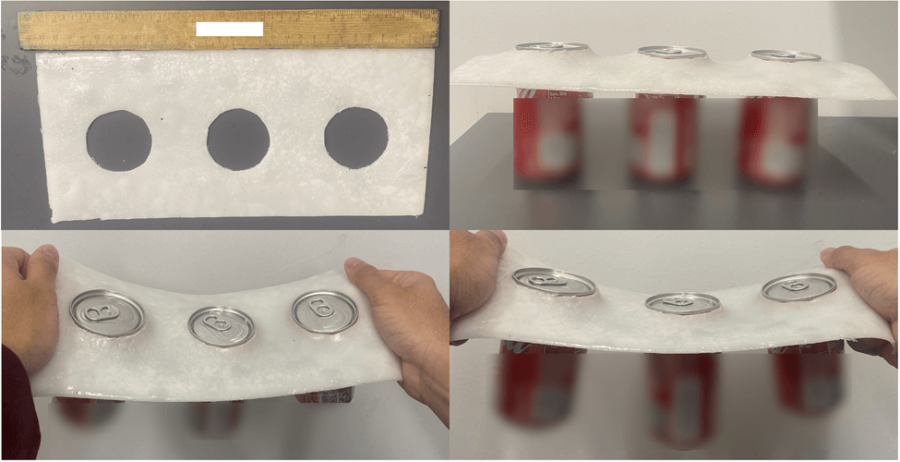Marine life may soon face far fewer deadly encounters with beverage rings and plastic bags thanks to an ingenious biomaterial developed by USC researchers. The team created a biodegradable plastic substitute using calcium carbonate—the same mineral that gives seashells their strength—combined with a citric acid polymer already approved for medical implants.
“I started thinking about how, even in our lab, everything is single-use plastic because everything has to be sterile. Nothing can be contaminated. It all just started to feel very overwhelming for me personally,” said Eun Ji Chung, who led the research team at USC Viterbi School of Engineering.
The innovative material, called POC-CC, was developed by incorporating different concentrations of calcium carbonate into poly (1,8-octanediol-co-citrate), a biodegradable elastomer used in FDA-approved orthopedic devices. When tested in simulated ocean water over six months, samples lost up to 8.5% of their weight, demonstrating their biodegradability while maintaining sufficient strength for practical applications.
Unlike conventional plastics that persist for centuries and break down into harmful microplastics, the POC-CC material proved biocompatible with marine microorganisms. When a common marine algae was exposed to water containing POC-CC degradation products, researchers found no significant impact on cell viability—a crucial factor for any material intended for marine environments.
As proof of concept, the team successfully created a prototype beverage holder ring strong enough to support three soda cans weighing over 190 grams. This demonstrates the material’s potential as a practical alternative to conventional plastics in real-world applications.
“Our results show the degradation rate increases with increased POC content, and the addition of CC maintains the pH of ocean water,” Chung explained.
With UNESCO reporting that plastic waste constitutes 80% of all marine pollution—with 8-10 million metric tons entering oceans annually—this seashell-inspired innovation represents a promising step toward addressing one of our most pressing environmental challenges. The research team is now developing an improved version designed to degrade even faster, potentially revolutionizing how we package everyday products while protecting ocean ecosystems for generations to come.
If our reporting has informed or inspired you, please consider making a donation. Every contribution, no matter the size, empowers us to continue delivering accurate, engaging, and trustworthy science and medical news. Independent journalism requires time, effort, and resources—your support ensures we can keep uncovering the stories that matter most to you.
Join us in making knowledge accessible and impactful. Thank you for standing with us!

